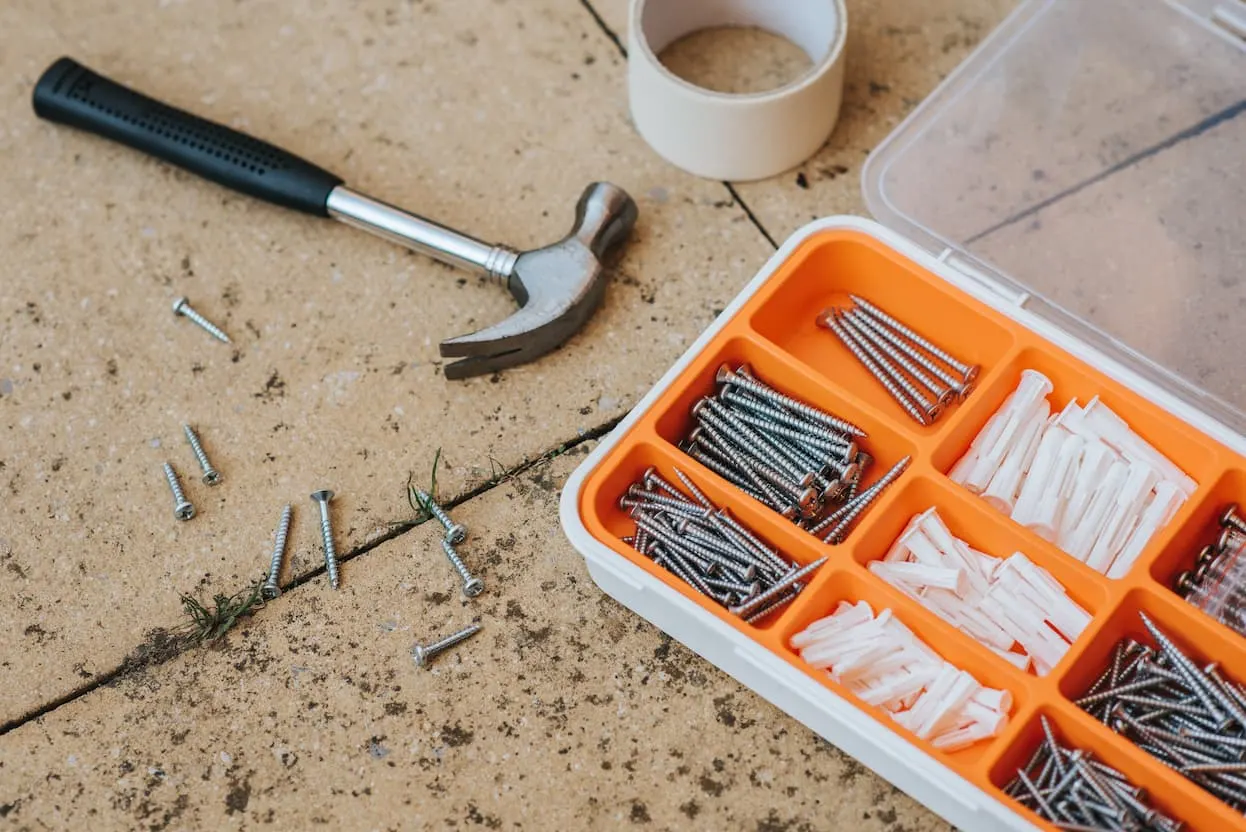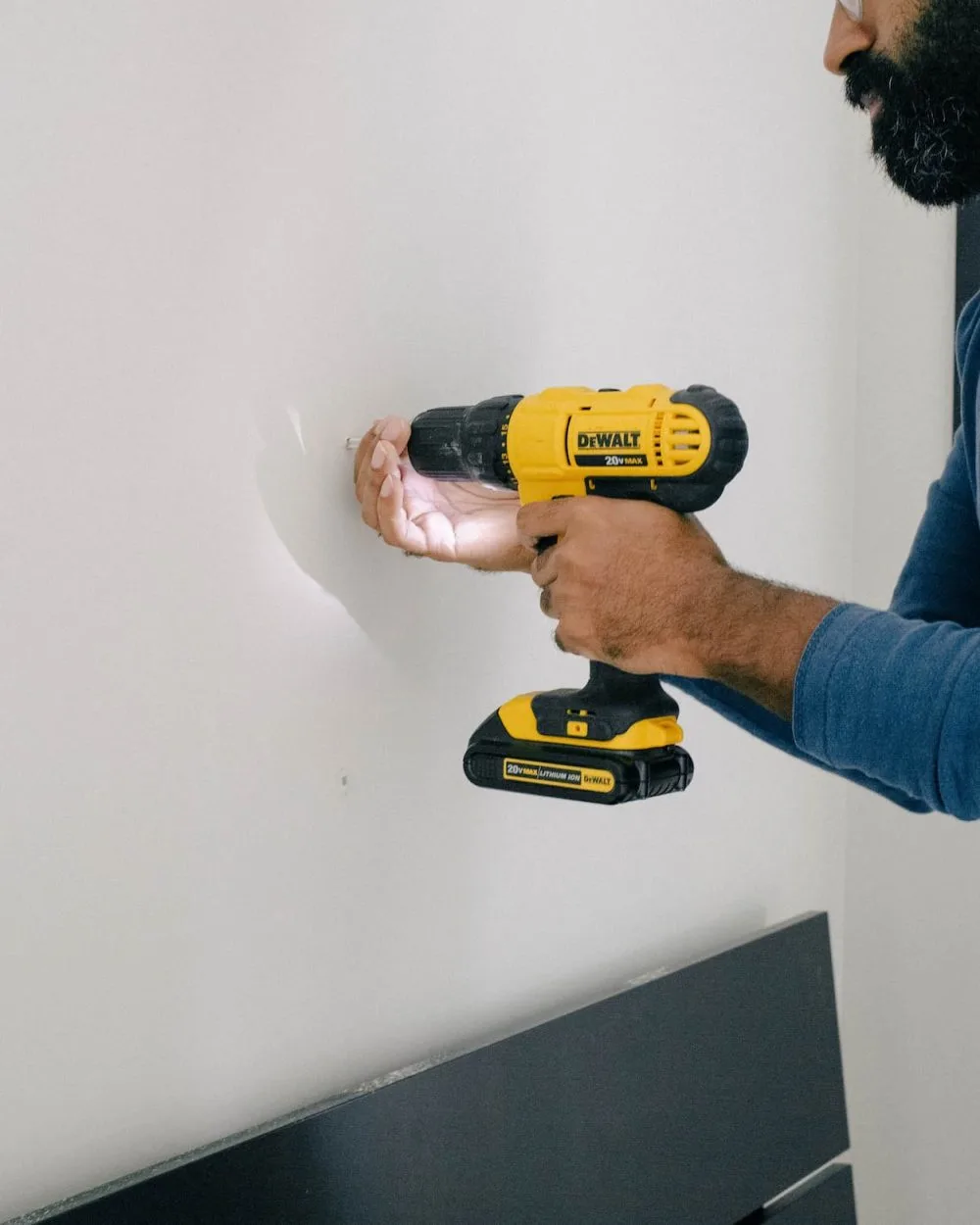When a DIYer needs to fix an object onto a masonry or concrete surface, the quantity of work is considerably increased for tasks that require simple wood surfaces or drywall. This is why special equipment, tools, and methods are required for the job.
There are a variety of concrete anchors that are available, and determining which are the most suitable for each job is a major challenge in itself. The two most commonly used fasteners in the masonry industry are Sleeve Anchors and Wedge Anchors.
The difference between a wedge anchor and a sleeve anchor is simply how they are applied and what material they apply to.
Sleeve anchors rely on expansion caused by torque tightening to hold inside the concrete. They are more flexible than a wedge anchor as they can be applied to concrete, bricks, and blocks.
A wedge anchor, on the other hand, is placed in drilled holes. The non-threaded end is inserted into the hole and struck to activate the expansion mechanism on the secured material. Unlike a sleeve anchor, these can only be applied to solid concrete only.
Both the sleeve anchor and the wedge anchors appear to be doing the same thing: expand and wedge an opening in concrete. However, the beginners might find it difficult to understand their usage. Keep reading the article to get the answers to the questions like What is the difference between them? Which is better? Or, what are the different conditions they are employed for?
Keep reading to know more.
What Are Wedge Anchors?

A wedge anchor is a mechanical expansion anchor specifically designed to use on solid concrete.
Wedge anchors are very popular and considered one of the most durable anchors in holding capacity. These anchors look like sleeve anchors but are made with a shorter sleeve at the base that anchor.
Wedge anchors are made of stainless steel construction, which makes them robust and resistant to corrosion. They are ideal for any type of masonry, including installation in the water and dry setting inside and outside.
For more information, have a quick look at this video:
What Are Sleeve Anchors?
Sleeve anchors are relatively simple and are typically used in bricks or blocks. However, they can be utilized in concrete, but aren’t considered to be as durable as wedge anchors.
So, for light or medium-sized holding needs, it is possible to use sleeve anchors as the ideal option.
There are two main types of sleeve anchors available: The Nut Drive, which is usually employed for strength, and the Phillips/Slotted Combo Driven Flathead, which is useful when a smooth surface is needed.
The weight that sleeve anchors can support is largely on the anchor’s dimension and the material it’s being fixed to. Anchors with sleeves generally fall in the middle-duty category (or up to 200 pounds, which can be strongly secured). It is essential to review the specifications of anchors to determine whether they hold enough power to meet your requirements.
Application differences
Wedge anchors can be used in several different applications so long as the base material is solid concrete. Sleeve anchors, on the other hand, can be set in concrete or brick.
Anchors of different types are designed for various applications. Certain types are extremely sturdy, while others are designed to be more flexible and simpler.
An anchor wedge is a mechanical expansion, which is comprised of four components; the anchor body with threads, an expansion clip, a washer, and a nut. Wedge anchors offer the best and the most reliable holding value of any type of mechanical expansion anchor.
Wedge anchors can be applied to:
- Windows
- Doors
- Signage
- Machinery
These anchors have the best durability and great holding strength set into the concrete. They are used for heavy-duty purposes, like anchoring wooden structures onto the ground.
Sleeve anchors, on the contrary, are more flexible and can be set in concrete or brick. However, they have the disadvantage of a lower holding capacity than the more specialized wedge anchor.
They’re a bit lighter-duty; however, on the plus side, they have the advantage of anchoring brick, mortar, or blocks, where wedge anchors are not advised.
Sleeve anchors can be used in various projects, such as fixing radiators at home, and for larger projects, like fixing the decking’s joists.
Like wedge anchors, sleeve anchors work by extension of their wedges. By tightening the nut, it pulls the stud’s end into the expander sleeve, pushing it outwards and then anchoring it into the base material, securing the entire thing in the right place.
Installation differences
For the installation of an anchor wedge, it is necessary to drill an opening that’s similar to the size of the anchor and then set it in. After you’ve set the anchor’s material on the concrete surface of the exposed area, insert the washer and connect the fastener to the anchor.
When you tighten the nut on the washer, it’ll at the same time draw the anchor up. This causes the skirt of your wedge to grab the concrete. It will then grow, causing it to dig into the concrete when an anchor pulls.

When installing wedge anchors, it is recommended to use a minimum of 2 1/2 inches of concrete. It should also have at least an inch visible, enough to allow the anchoring materials to hold to.
To set up a sleeve anchor (the one that is driven by a nut) make a hole, and put the sleeve anchor inside the hole. Set the washer and nut on the threads that are exposed and start attaching the nuts. When the anchor is pushed into the concrete, the sleeve surrounding it will begin to expand, allowing the anchor into the hole.
In all cases, the strong bond between the piece and the concrete is strengthened through friction. The primary way to ensure a strong bond between the anchors and the concrete is to make the correct dimensions and depth. If the hole isn’t deep, the anchor will likely break when it is time to do so, resulting in serious problems.
Minimum Length/Depth
The length that is required to anchor the sleeve is based on the thickness of the material to be fastened to the required embedment depth for the size of the anchor to be used.
See the table below for the minimum embedment levels for various sizes of sleeve anchors:
| Diameter | Minimum Embedment Depth |
| 5/16” | 1-7/16″ |
| 3/8” | 1-1/2” |
| 1/2” | 2-1/4” |
| 5/8” | 2-3/4” |
| 3/4” | 3-3/8” |
When using a wedge anchor, however, the standard is that the distance between the washer and nut should be equal to the size of the wedge anchoring used.
For example, when a 2×4 wedge is fastened to concrete using half-inch wedge anchors, it is recommended that the length for the wedge would be 1 1/2″ (2 x 4) + 2-1/4″ (minimum embedment) + 1/2 inches (space for washer and nut) is 4-1/4″.
Also, note that the Wedge anchor bolt extends from the tube’s end into the hole in the tube sheet rolls. This causes the inner wall to expand continuously and creates plastic deformation. The tube expander must be removed so that the tube sheet’s elastic deformation can be restored to its original condition. The tube sheet will then tightly fit around the tube end, sealing and keeping them together. However, plastic deformation at the tube end cannot ever be restored.
How Deep Can You Put in Wedge Anchors?
For concrete wedge anchor installation, drill the hole at least half an inch deeper than the concrete wedge anchor will penetrate, or 1/2″ more than the required depth for embedding.
With a wire brush, vacuum or compress the air and clean the holes, dust, and debris.
Conclusion
- This article highlights the key differences between wedge and sleeve anchors. These two are commonly used fasteners for masonry and concrete surfaces.
- The main difference lies in how they are applied and the materials they are suitable for.
- These are ideal for solid concrete. These are also known for their durability and strong holding capacity. They are often made of stainless steel for corrosion resistance. They can be used indoors and outdoors.
- Sleeve anchors are more flexible and can be used in concrete, brick, or block. They are suitable for lighter to medium-duty applications. Its application depends on anchor size and material.
- Wedge anchors are used for heavy-duty purposes. For example, anchoring structures to the ground, machinery, doors, and windows. Sleeve anchors suit various projects, including fixing radiators and decking joists.
- Proper installation is crucial for both types. Wedge anchors require a minimum concrete depth. Sleeve anchors rely on friction for a strong bond. It must be embedded to a specific depth based on its diameter.
- Wedge anchors are generally more expensive but offer superior holding capacity. In contrast, sleeve anchors are more versatile but may have lower holding limits.
- The effectiveness of both anchors is closely tied to correct installation practices. It ensures a strong and reliable hold.
- Choose the right anchor based on your project’s requirements. Also, choose the materials you’ll work with to achieve the best results.
To learn more, check out our article on “Javelin” vs. “Spear” (Comparison)

